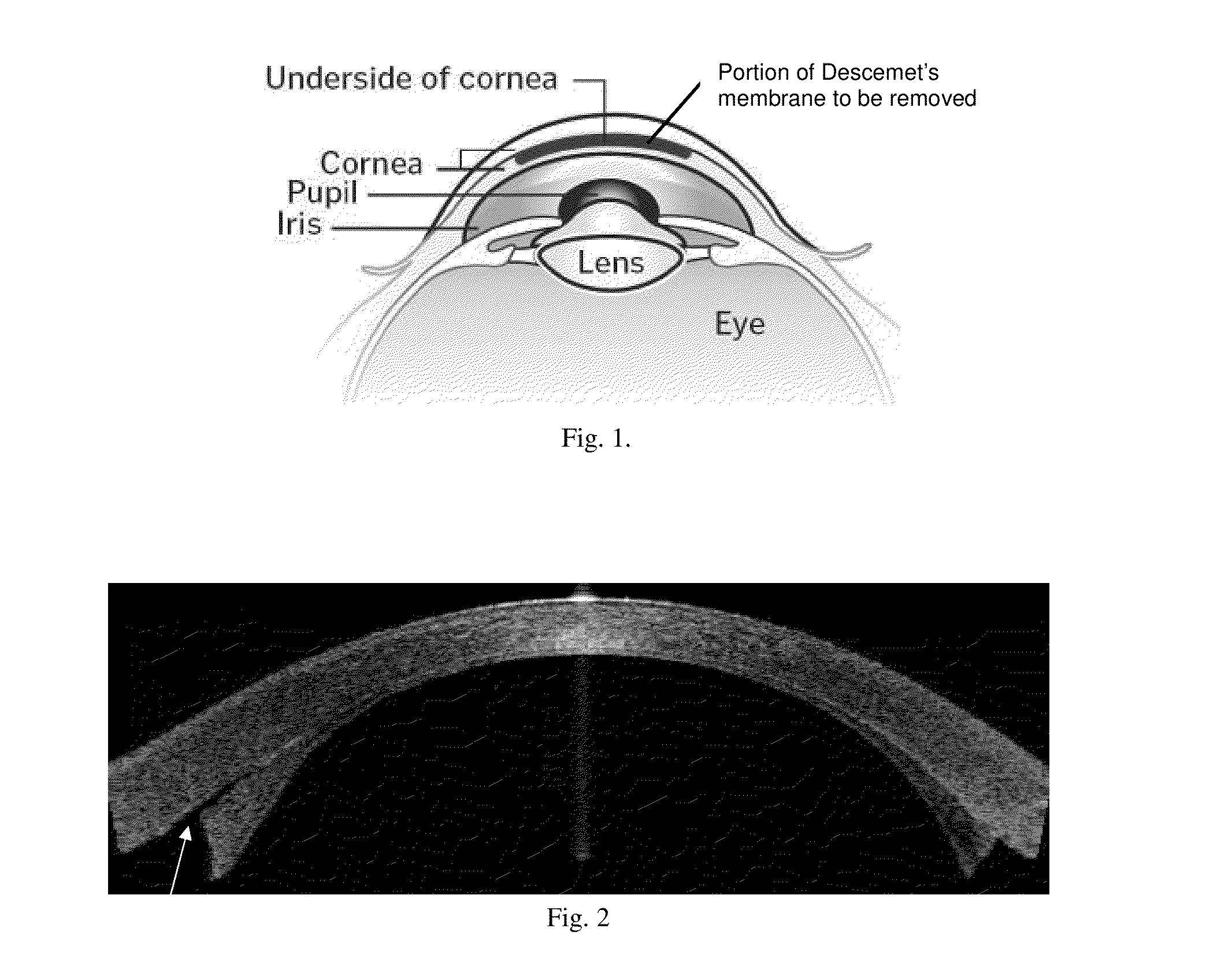Corneal graft evaluation based on optical coherence tomography image
a tomography image and corneal graft technology, applied in the field of corneal graft evaluation based on optical coherence tomography image, can solve the problems of reducing vision clarity, cornea becomes cloudy, and the bond between the replacement cornea and the remaining portion of the eye is not strong, and is at risk of ruptur
- Summary
- Abstract
- Description
- Claims
- Application Information
AI Technical Summary
Benefits of technology
Problems solved by technology
Method used
Image
Examples
Embodiment Construction
[0031]Referring to FIG. 4, a flow chart is given of an embodiment of the invention, known as the COLGATE (COrneaL GrAft Thickness Evaluation) system. The input to the image is a 2-dimensional OCT image 10 such as the image shown in FIG. 8(a). The image may be one slice from a 3-dimensional OCT image containing a large number of 2-d slices, e.g. scanned in a star-shape formation. The 2-dimensional OCT image is selected (e.g. manually) to contain the graft. Optionally, COLGATE can be run on each of a number of 2-dimensional OCT images sequentially.
[0032]In step 1, the embodiment extracts the boundary of the body formed by the combination of the graft and the remaining portion of the cornea. The top surface of this body is the original cornea (which is unchanged by the DSAEK), and the bottom surface of the body includes the lower surface of the graft and a portion of the lower surface of the original cornea. In step 2, the embodiment detects the corners of the transplanted graft. In st...
PUM
 Login to View More
Login to View More Abstract
Description
Claims
Application Information
 Login to View More
Login to View More - R&D
- Intellectual Property
- Life Sciences
- Materials
- Tech Scout
- Unparalleled Data Quality
- Higher Quality Content
- 60% Fewer Hallucinations
Browse by: Latest US Patents, China's latest patents, Technical Efficacy Thesaurus, Application Domain, Technology Topic, Popular Technical Reports.
© 2025 PatSnap. All rights reserved.Legal|Privacy policy|Modern Slavery Act Transparency Statement|Sitemap|About US| Contact US: help@patsnap.com



